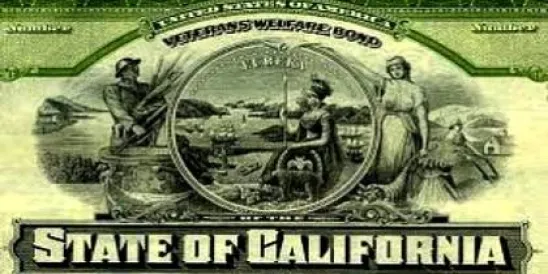This article is the latest in a series chronicling the first litigation challenge to AB 32 (the Global Warming Solutions Act) and the cap-and-trade program in Association of Irritated Residents, et al. v. California Air Resources Board, Case No. CPF-09-509562, ("Ass'n of Irritated Residents v. CARB "). Though environmental justice groups continue to object to cap-and-trade as the primary vehicle to reduce greenhouse ("GHG") emissions to 1990 levels by 2020, the California Supreme Court recently allowed California Air Resources Board's ("ARB") cap-and-trade implementation to move forward, and agency rule development continues.
Agency Development
On August 24, 2011, the ARB Board ("Board") unanimously approved both ARB's new supplemental assessment ("Supplement") and re-approved its Scoping Plan, which provides the overall roadmap and rule measures to carry out AB 32. The Board also approved a more robust California Environmental Quality Act equivalent document supporting the supplemental analysis of the cap-and-trade program.[1] The Board's determination was made at the conclusion of a presentation by ARB staff and arguments proffered by environmental justice groups. Environmental justice groups' arguments centered around the contention that a cap-and-trade program would allow large industrial emitters of GHG to meet their obligations through the purchase of offsets and emissions from other locations, which would discriminately impact low-income and minority areas. Ultimately, the ARB Board approved cap-and-trade in spite of concerns raised by environmental justice groups. The Board also considered the written public comments to the supplemental analysis, and ARB staff's prepared responses to those comments.[2]
While ARB declined to comment on the Board's vote, this development ultimately reaffirms the organization's support for the controversial cap-and-trade program. The vote also validated the belief amongst its supporters that cap-and-trade is the most effective tool in reducing GHG emissions. As currently written, the cap-and-trade program would cover eighty percent (80%) of the state's emissions, including 360 business representing 600 facilities across the state.
According to a source close to ARB, the newly approved Supplement may not contain the only revisions and additions to AB 32, the Scoping Plan, and the cap-and-trade program. Amendments to be considered in future ARB meetings include expansion of the supply of GHG offsets, protection for in-state companies from trade exposure to out-of-state companies, linkage to other trade programs, and design of a market-trade system.
Additional revisions prior to the 2013 launch of the cap-and-trade program would stem from legally sensitive, complex issues facing California officials regarding cost containment and impacts on out-of-state activities. As with the revisions adopted by the Board in August, any further change would probably renew opposition to the already highly controversial program.
Currently, ARB is scheduled to approve dozens of revised implementation regulations for the cap-and-trade program at its October 20-21, 2011 meeting. On September 12, ARB staff released a set of final revisions to be discussed at this October meeting. The fifteen-day public comment period for these revisions ended September 27. Comments have been received by environmental groups, major industry organizations, carbon-offset traders and other stakeholders.
Litigation Development
As explained in prior blogs, a California Superior Court decision from earlier this year halted implementation of cap-and-trade. On June 24, the First District Court of Appeal issued an order granting ARB's petition for a writ of supersedeas.[3] This stayed the Superior Court's ruling[4] against the program and allowed ARB to continue to advance and finalize plans for the cap-and-trade program while the Appellate Court determined the merits of ARB's appeal. The Center for Race, Poverty, and the Environment filed a petition for review with a request for stay with the California Supreme Court on July 26.[5] In its petition, the Center asked the Supreme Court to lift the stay on the injunction to again stop ARB from continuing to work on the cap-and-trade program. The petitioners also requested that the Supreme Court hear ARB's appellate petition.
The petitioning environmental groups argued that the Appellate Court should not have granted a stay on the lower court's injunction. The groups also insisted that ARB should have to complete a "meaningful environmental review of alternatives to cap-and-trade program before the rules can be finalized, and that the new review approved last month is deficient." ARB's attorneys countered that the petitioners failed to raise an "important question of law justifying review." Instead, ARB contends that petitioners mischaracterized the cap-and-trade proceeding as "premature implementation," rather than the non-final administrative proceeding it was. ARB also argued that the trial court's injunction was mandatory in effect, rather than prohibitory as alleged by the petitioners.
On September 28, 2011, after review of the advocates' petition and ARB's answer, the California Supreme Court declined to immediately halt implementation of the cap-and-trade program. The Supreme Court's decision was limited only to the stay application instituted by the Appellate Court, and was not a ruling on the merits. The Court of Appeal will continue to hear ARB's appeal on the merits of the Superior Court's final order.
In addition to the pending Ass'n of Irritated Residents appeal, ARB may soon be facing other suits against its cap-trade-program. Brent Newell, the attorney representing the Center for Race, Poverty, and the Environment in the above-mentioned Supreme Court ruling, recently noted that it is likely there will be a direct legal challenge to the revised analysis and Scoping Plan Supplement approved by the Board in August. A lawsuit could be filed as early as January 2012, after state administrative officials finalize regulations to implement the cap-and-trade program.
On other fronts portending additional litigation, the California Chamber of Commerce, and other state industry groups have alleged, and continue to allege, that the state's plan to sell GHG allowances under its cap-and-trade program amounts to a tax requiring two-thirds (2/3) approval of the California Legislature. These groups claim the allowance payments to the states are, in reality, taxes that do not provide a direct benefit or service to the fee payer, in violation of California law. State officials have publically denounced these legal claims to be misguided. Specifically, ARB maintains the auction sales are not subject to a two-thirds (2/3) vote.
Further, California utilities have raised various legal objections regarding ARB's regulation of interstate electricity transactions under the cap-and-trade program. Specifically, state utilities are worried their compliance with the program will subject them to complex ramifications if they purchase electricity from the United States Department of Energy Bonneville Power Association ("BPA"), a major electricity-supply agency in the Pacific Northwest. Adding fuel to these fears, BPA has signaled it may bring suit against ARB for regulating activities under the cap-and-trade program.
In a letters dated September 20 and August 1, 2011, BPA attorney J. Courtney Olive, contends that ARB has no authority to regulate BPA since BPA operates as a sovereign entity. Olive charges that, despite ARB's contention that the Clean Air Act waives sovereign immunity, it is questionable whether that waiver would be applicable to BPA due to the fact BPA is "purely a marketer that is not engaged in an activity that discharges pollutants." At this point, BPA is participating in the cap-and-trade program in a voluntary basis, but is concerned that mandatory regulations could interfere with "existing contracts and conflict with the marketing scheme established by Congress in BPA's governing statutes."
Only time will tell what the final determination of Ass'n of Irritated Residents v. CARB and the future of the cap-and-trade program as proposed by AB 32 will be. More updates to come...
[1] Discussion of the supplemental analysis can be found here. As explained in prior blogs on this website, ARB was compelled to present a more detailed assessment of cap-and-trade in order to overcome legal challenges.
[2] The final version of the supplemental analysis approved by the Board, the ARB staff's presentation, and its response to written comments on the analysis can be found here.





 />i
/>i

